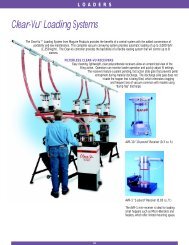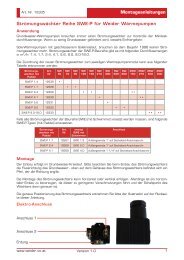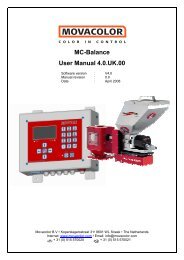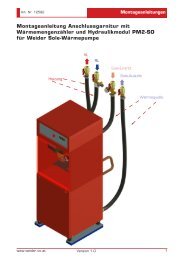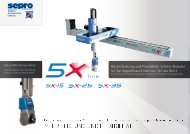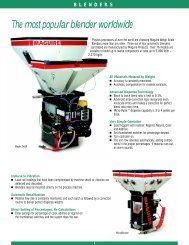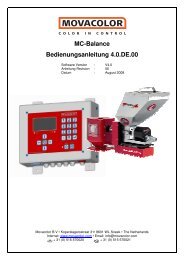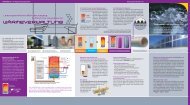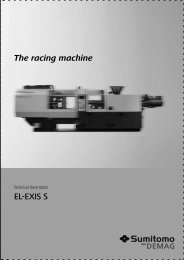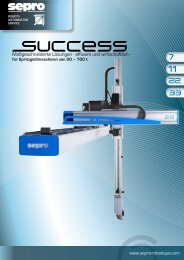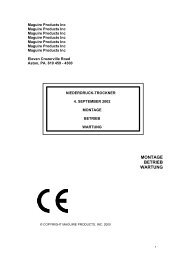Feeder - Maguire Products
Feeder - Maguire Products
Feeder - Maguire Products
Create successful ePaper yourself
Turn your PDF publications into a flip-book with our unique Google optimized e-Paper software.
VOLUMETRIC<br />
CONTROLS<br />
<strong>Maguire</strong> Volumetric Controls<br />
Employees have little time to monitor volumetric feeders<br />
Automatic Speed Control<br />
<strong>Maguire</strong> <strong>Products</strong> offered its first microprocessor-based automatic<br />
speed controller in 1981. More than 15,000 feeders have been<br />
sold and are operating today!<br />
Automatic Speed control eliminates the need to manually adjust<br />
motor speed to properly control the rate of color or additive<br />
delivery. With automatic speed control, the operator sets only a<br />
digital counter for the exact amount of color that is to be added<br />
during each molding cycle.<br />
For Injection Molders the microprocessor inside the controller<br />
measures the screw return time of each cycle. A proper motor<br />
speed is then calculated for the next cycle so that the exact amount<br />
of color requested by the counter setting is dispensed over the full<br />
time available. As screw return times change over hours of<br />
production, motor speed and metering rate adjust automatically.<br />
For Extruders running in “continuous” mode, the counter setting<br />
will directly regulate motor speed. A digital tach feedback from the<br />
motor armature assures that motor speed is precisely held. Uniform dispensing and consistent<br />
coloring are assured: overcoloring is eliminated.<br />
Calibration<br />
It is only necessary to calibrate a given material one time. Once the machine is calibrated for a<br />
particular grade of material and the proper setting is calculated, the metering rate for that<br />
material is determined. For future reference the user should make note of the setting and use it<br />
when that material is run again. It is not necessary to recalibrate.<br />
The actual production environment is not at all like a lab. Your employees<br />
have better things to do than constantly monitor your color feeders.<br />
With many competitors’ units you adjust color by adjusting motor<br />
speed. The only way to set the quantity of color that is going to be<br />
metered is to set the speed of the motor, and know how long it is going<br />
to run (screw return time). The speed of the motor will vary with the<br />
plant voltage, which will change throughout the day, generally increasing<br />
in the evening. The screw return time will change as temperature<br />
changes, with variations in the resin, and with adjustments to back<br />
pressure.<br />
The only way to know how much color is being added per cycle is to<br />
actually take a sample and weigh it. You can be sure that if this were<br />
done every hour, an adjustment would be required every time.<br />
In actual practice, few processors calibrate equipment on a frequent<br />
basis. The workload on individuals in the factory is such that they do<br />
only those things necessary to make quality parts. Conservation of<br />
color is secondary. Putting in too little color will produce a rejected part,<br />
but an error on the plus side will not cause a noticeable problem. This<br />
error does, however, cost a lot of money.<br />
Automatic speed control completely eliminates the need for motor<br />
speed adjustment.<br />
21



